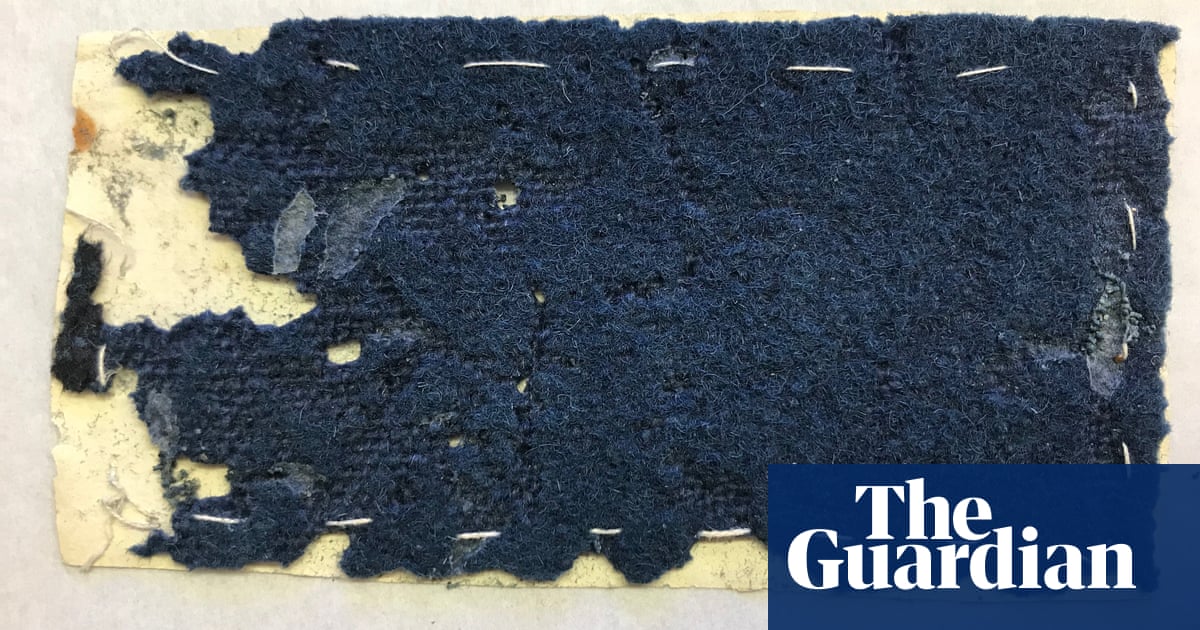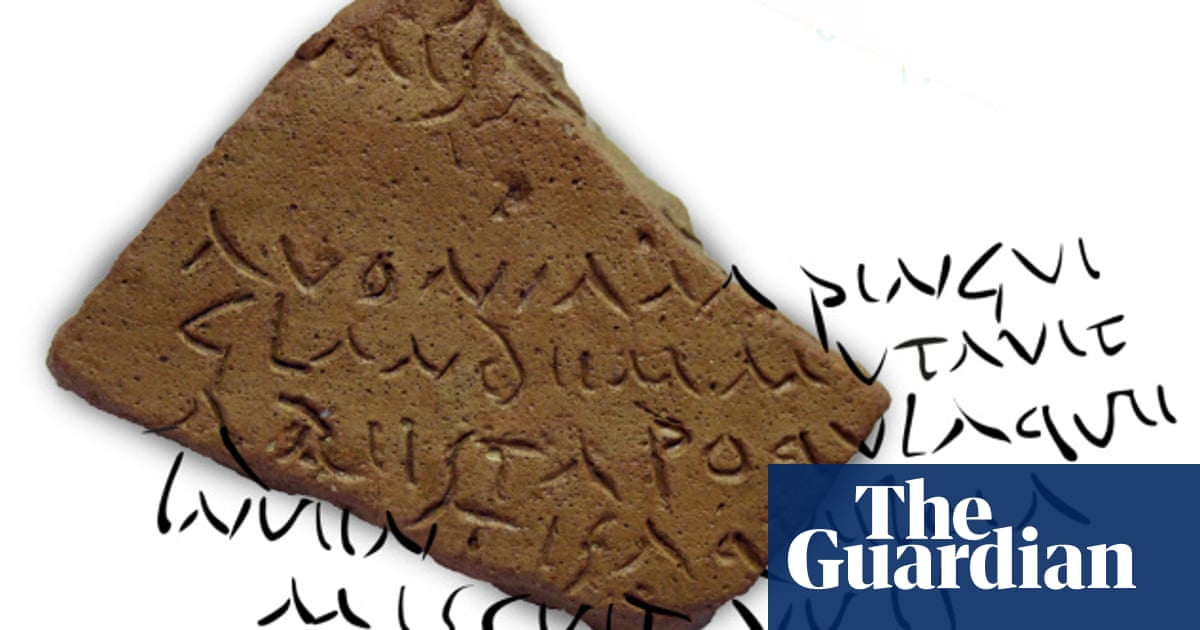
It is a scrap of indigo woollen cloth that is slightly moth-eaten and so tiny that few would give it a second glance, but a 1783 note on its reverse has revealed its chilling significance.
Discovered in a public record office in England, it has been identified as the only surviving fragment of its kind used to clothe millions of enslaved people in the Caribbean and North America for almost 200 years. This coarse fabric, known as “slave” or “negro” cloth, was woven in West Yorkshire, close to the town of Penistone, from which it derives its name.
It had been tacked with white thread to a card, whose note reads: “Penistone sent for negro clothing 1783 which for substance strength and unchangeable colour is best adapted to that purpose.”
It was among papers donated to the Derbyshire Record Office in the 1960s in lieu of inheritance tax by the Fitzherberts, a wealthy Derbyshire family who owned plantations in Barbados and Jamaica.
Its significance was realised by Jo Andrews, a textiles expert, who describes it as an “extraordinary survival” because such cloth was generally worn to rags before being replaced.
She told the Guardian: “It was captioned as a sample of ‘negro’ cloth, but they hadn’t realised the significance. They were completely amazed … when I realised that it was certainly the only one in Britain and probably the only one in the world.”
She said: “Very little is known or has been written about how the millions of those who were enslaved were clothed. This small sample begins to unravel that story and tell us that it wasn’t just the rich in Britain, Ireland and Europe who benefited from slavery, but also weavers and spinners.
“Very poor vulnerable families were managing to make a living out of slavery. Whether or not they knew in the beginning where their cloth was going, we don’t know.
“This is cottage industry … manufactured by very poor households, by hand, in tiny cottages and farms, and then it’s coming into Penistone, where it’s sold in the Cloth Hall, which is still there, although it’s a Boots chemist today.”
Andrews added: “The minute [that] emancipation came, demand for these cloths absolutely plummeted. Nobody wanted to wear them because they were badges of enslavement. Also they were extremely coarse and uncomfortable.”
Chris Evans, professor of history at the University of South Wales and a historian of slavery, said this was cloth for fieldworkers in Barbados and Jamaica, doing the “very brutal work” of cultivating cotton: “The survival of something that was intended for the use of enslaved people is unheard of, in my view. To have it labelled on the reverse is unique.”
He added: “These were fabrics that, by their very nature, weren’t expected to last … Unlike high-value costumes, no one ever thought of preserving them. They were ignoble materials.”
Andrews, a weaver based in Salisbury, will discuss the discovery in her monthly Haptic & Hue podcast on Thursday 6 April.
Sarah Chubb, archives and local studies manager for Derbyshire county council, said: “We are delighted to discover that this cloth sample is an important survivor and can add significantly to the knowledge and understanding of transatlantic slavery.”












